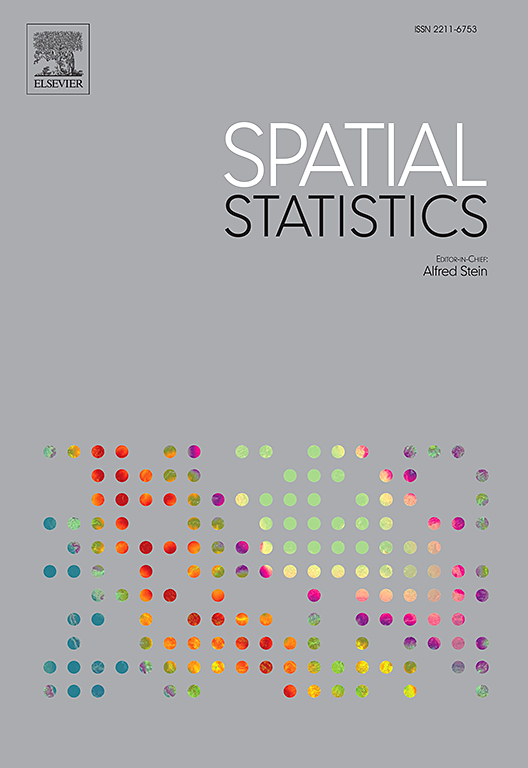Model averaging for spatial autoregressive panel data models
IF 2.5
2区 数学
Q3 GEOSCIENCES, MULTIDISCIPLINARY
引用次数: 0
Abstract
The spatial autoregressive panel data models are widely employed in regional economics to capture spatial dependencies, but conventional specifications rely on a single spatial weight matrix, heightening the risk of model misspecification. Current research lacks systematic model averaging methods for integrating multiple weight matrices and addressing spatial effect uncertainty. This study proposes a novel model averaging framework for spatial autoregressive panel data models with fixed effects, extending model averaging methodology to the spatial panel context and enabling flexible combinations of multiple weight matrices for both dependent variables and error terms. An adaptive Mallows-type criterion is developed, dynamically adjusting to the presence or absence of spatial effects, with its asymptotic optimality established. Monte Carlo simulations confirm robustness across scenarios with no, single, or mixed spatial dependencies. An empirical application to Chinese provincial housing prices identifies economic adjacency as the key spatial dependence driver, validating the method’s predictive accuracy and policy utility for spatiotemporal data analysis.
空间自回归面板数据模型的模型平均
空间自回归面板数据模型在区域经济学中被广泛应用于捕获空间依赖关系,但传统的规范依赖于单一的空间权重矩阵,增加了模型错误规范的风险。目前的研究缺乏系统的模型平均方法来积分多个权重矩阵和处理空间效应的不确定性。本研究为具有固定效应的空间自回归面板数据模型提出了一种新的模型平均框架,将模型平均方法扩展到空间面板环境,并实现了因变量和误差项的多个权重矩阵的灵活组合。提出了一种自适应mallows型准则,根据空间效应的存在或不存在进行动态调整,并建立了其渐近最优性。蒙特卡罗模拟证实了在没有、单一或混合空间依赖性的情况下的鲁棒性。通过对中国省级房价的实证分析,发现经济邻接性是主要的空间依赖驱动因素,验证了该方法在时空数据分析中的预测准确性和政策实用性。
本文章由计算机程序翻译,如有差异,请以英文原文为准。
求助全文
约1分钟内获得全文
求助全文
来源期刊

Spatial Statistics
GEOSCIENCES, MULTIDISCIPLINARY-MATHEMATICS, INTERDISCIPLINARY APPLICATIONS
CiteScore
4.00
自引率
21.70%
发文量
89
审稿时长
55 days
期刊介绍:
Spatial Statistics publishes articles on the theory and application of spatial and spatio-temporal statistics. It favours manuscripts that present theory generated by new applications, or in which new theory is applied to an important practical case. A purely theoretical study will only rarely be accepted. Pure case studies without methodological development are not acceptable for publication.
Spatial statistics concerns the quantitative analysis of spatial and spatio-temporal data, including their statistical dependencies, accuracy and uncertainties. Methodology for spatial statistics is typically found in probability theory, stochastic modelling and mathematical statistics as well as in information science. Spatial statistics is used in mapping, assessing spatial data quality, sampling design optimisation, modelling of dependence structures, and drawing of valid inference from a limited set of spatio-temporal data.
 求助内容:
求助内容: 应助结果提醒方式:
应助结果提醒方式:


